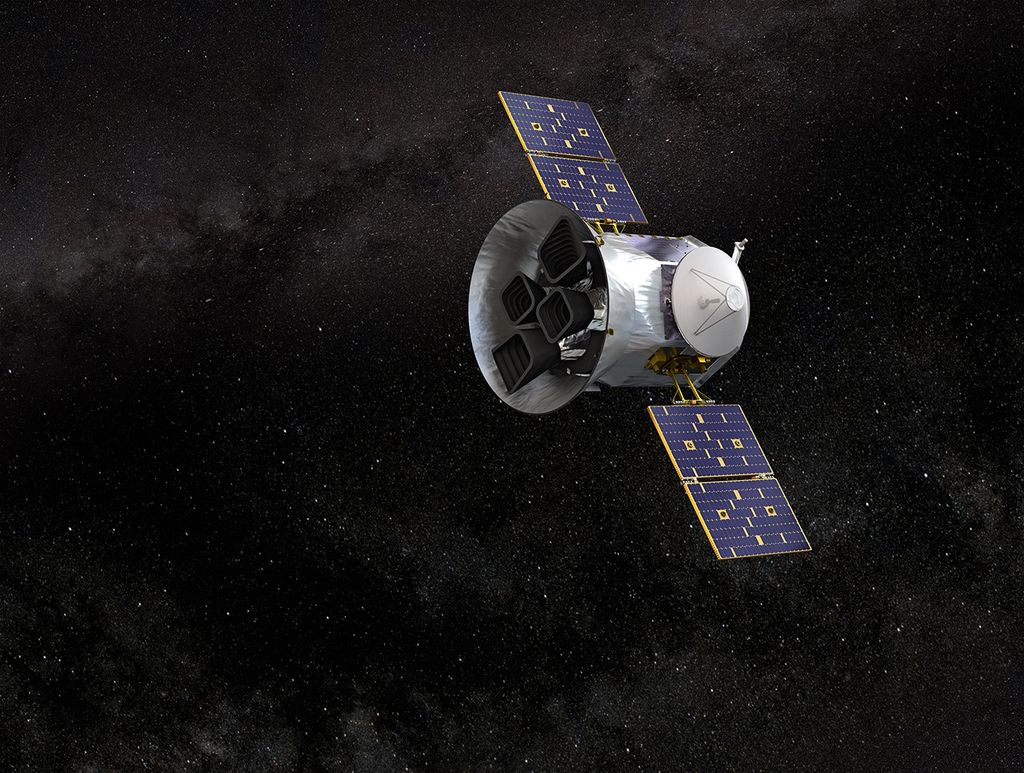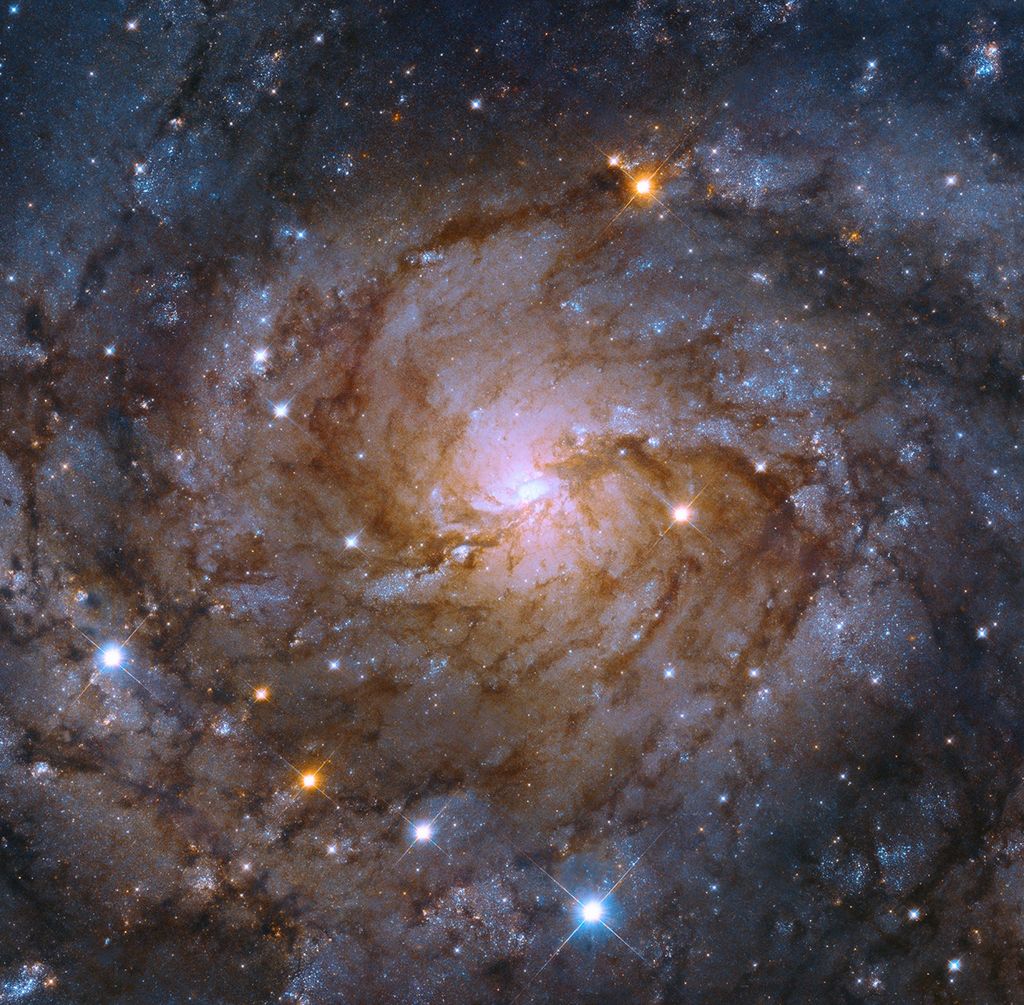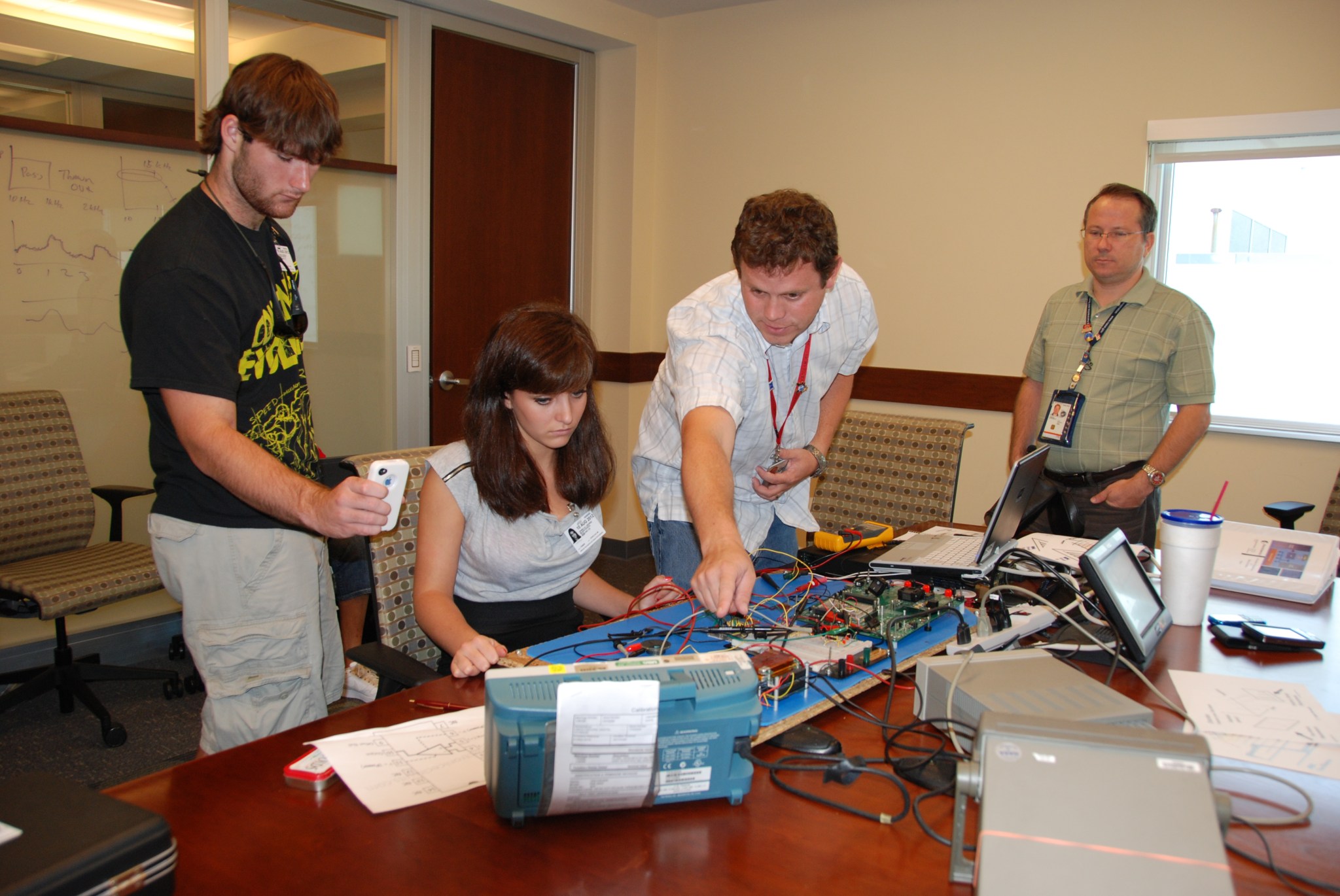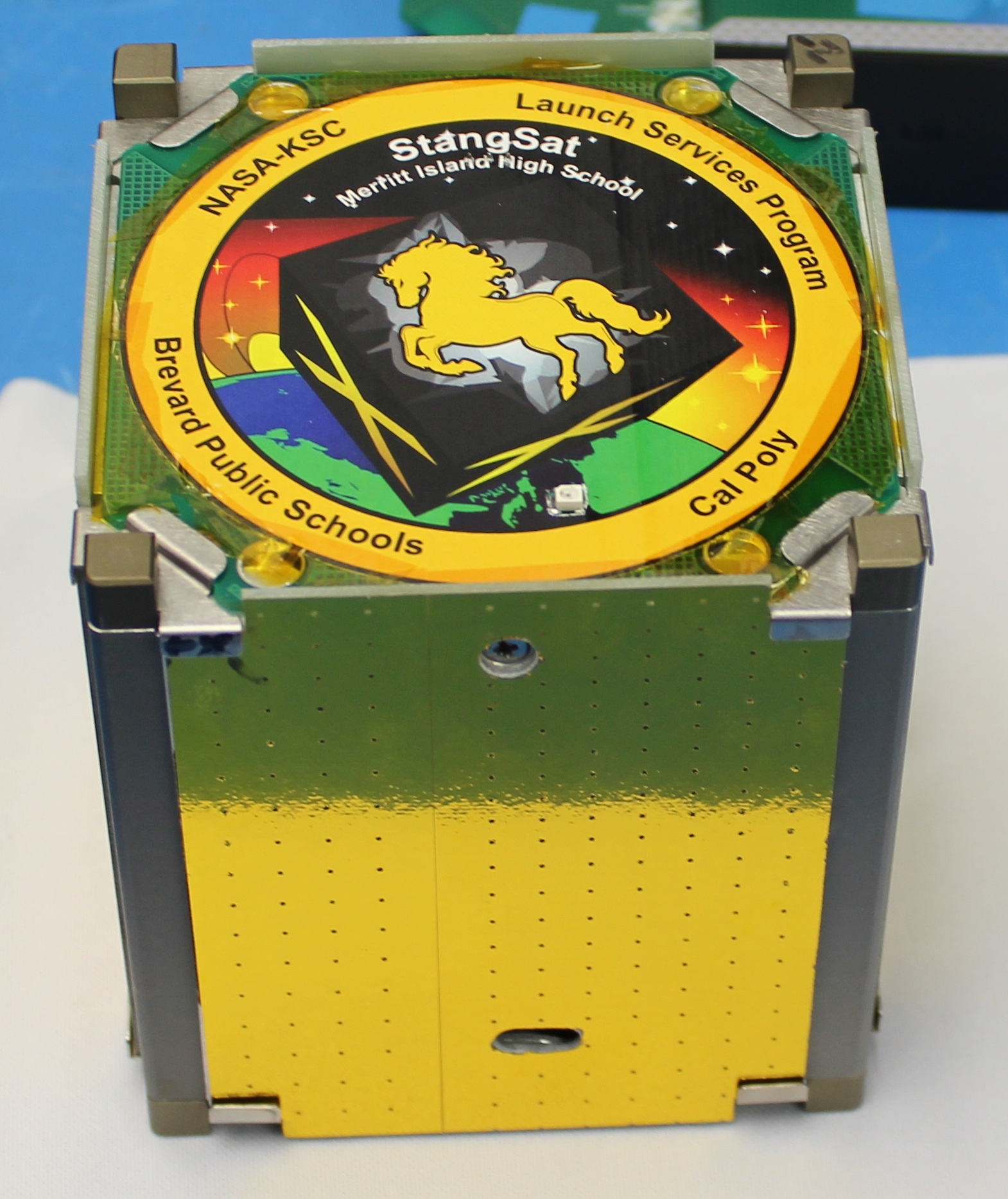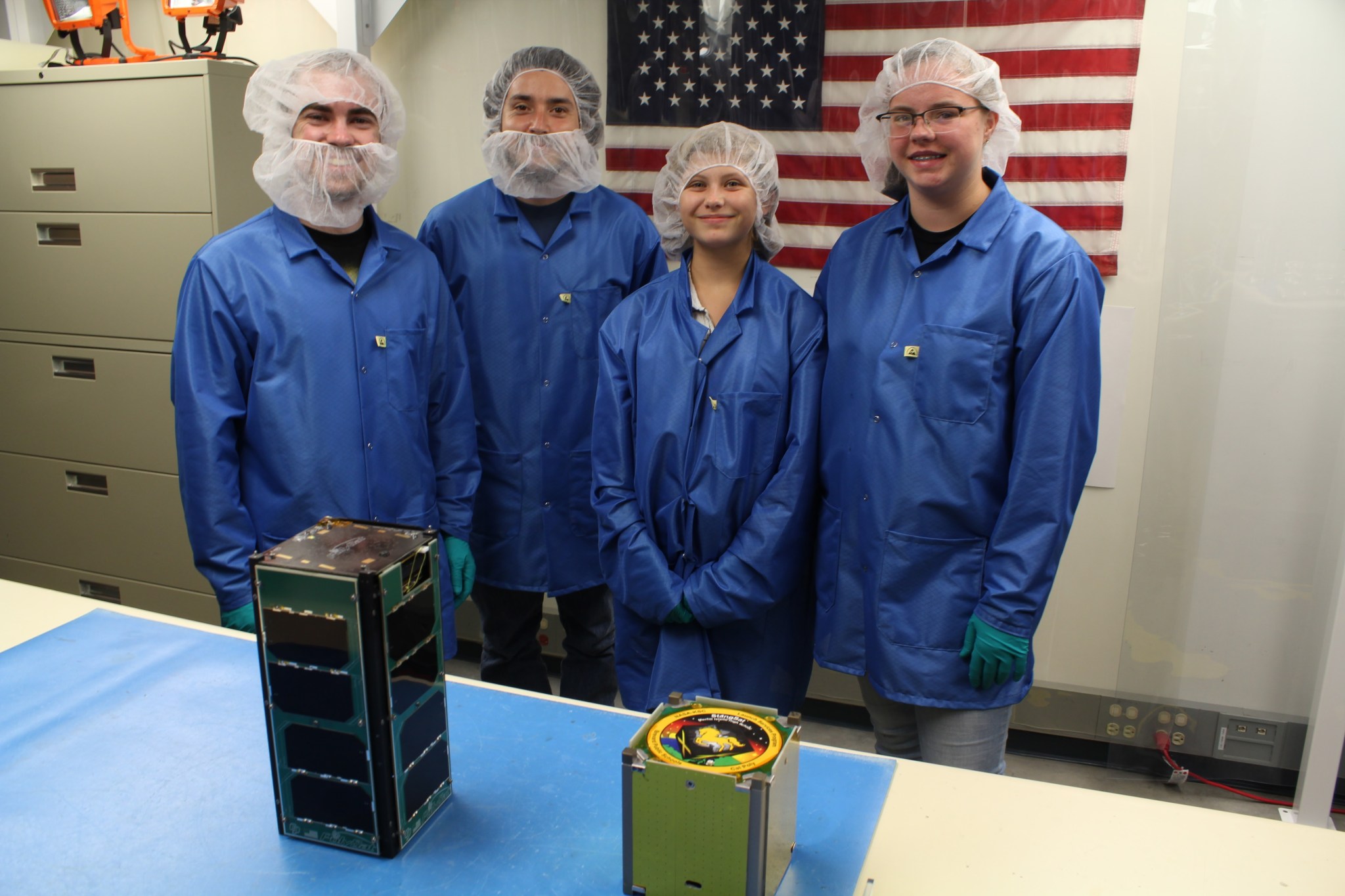
By Danielle Sempsrott
NASA’s Kennedy Space Center
It took eight years and nearly 80 high school students participating in the project along the way, but the Merritt Island High School’s “StangSat” cube satellite – more commonly known as a CubeSat – is finally ready to launch.
Named for the high school’s mascot – the mustang – StangSat will measure the shock and vibration of a launch to determine just how durable CubeSats must be built.
StangSat has a sister satellite, Launch Environment Observer (LEO), from California Polytechnic State University that required students to take two trips to California for testing to ensure the two satellites were compatible.
While StangSat is made of more malleable and cost-effective materials, LEO is a more rigid satellite and, thus, more expensive to build. The goal is to collect data from both satellites to see how strong a CubeSat really has to be to withstand a launch and if there’s an opportunity to build them in a more cost-effective manner.
“If you build it too strong, you’ve wasted money. And if you build it too weak, it will break and you’ve wasted money,” said Tracey Beatovich, a math teacher at the high school and the lead of this project. “We’re really trying to optimize the sweet spot of testing and building.”
In addition to traveling to California, the project required students to devote many weekends, holidays and nights to its development. For rising senior Jessica Bellaire, it’s been well worth it.
“My favorite part has been the rapid amount of information you learn just walking on base and seeing NASA in its fullness,” she said. “I’ve enjoyed the program, it’s been interesting and fun. It’s a way to see new things.”
StangSat has been in development since 2011, as part of a Space Act Agreement between NASA’s Kennedy Space Center in Florida and Brevard County schools. As part of the agreement, NASA provided mentors, hardware and knowledge, while the students actually built the CubeSat. Merritt Island High School was chosen by the school system as the ideal candidate due to its close proximity to Kennedy, where many meetings between students and mentors were held.
“Almost 80 students have gone through the project, and they’ve delivered every single time we’ve asked them to do something,” said Shaun Daly, an integration engineer in the Launch Services Program at Kennedy and the lead mentor for this project. “They have a way of portraying themselves that’s beyond their years.”
The students, ranging from freshmen to seniors, followed the same standards, development cycle and review processes that engineers follow for the development of a satellite. As part of the review process, students had to present to experts at NASA and the U.S. Air Force.
“We’ve done the whole nine yards,” said Beatovich, “and they did not take it easy on the students. But it’s been awe-inspiring, seeing their growth, and it really comes through on the trips and the design reviews.”
Part of science, technology, engineering and mathematics (STEM) outreach, this project has provided students with leadership role opportunities, inspired satellite projects among other schools and equipped students with networking opportunities, enabling them to pursue careers in the STEM field. Former Merritt Island High School student Briana Krygier’s involvement in the project led her to where she is today. Through the NASA Internships Program administered by the Office of STEM Engagement, she was offered an internship at Kennedy during the summers of 2013 and 2014. She was later selected as a Pathways intern at Johnson Space Center in Houston, where she now works full time.
“I still hold on to my inspiration and lessons learned from StangSat,” said Krygier. “STEM outreach is key to attracting the next great minds to the space program.”
StangSat is set to launch on a SpaceX Falcon Heavy rocket as part of the Department of Defense Space Test Program-2 mission, managed by the U.S. Air Force Space and Missile Systems Center. The launch is scheduled for no earlier than June 24 at 11:30 p.m. EDT. The rocket will lift off from Launch Complex 39A at Kennedy. It is expected to be the first night launch of a Falcon Heavy, as it lofts nearly two dozen satellites, including four NASA payloads, to space.
For more information about the NASA technology demonstrations and science missions aboard this launch, visit:
Watch prelaunch activities and launch coverage on NASA TV: https://www.nasa.gov/nasalive


















